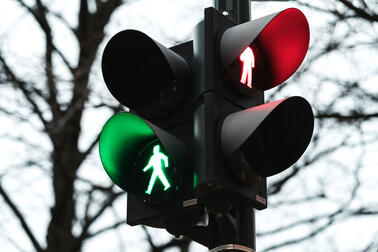
Safety in Helsinki is perceived as being relatively good in general, with residents assessing their own neighbourhoods as being even safer. More than half of the respondents to the safety survey perceived their neighbourhood as safe, with just over a third perceiving it as fairly safe.
“Helsinki is still perceived as being a safe city, which needs to be the case in future as well. Helsinki’s good level of perceived safety can also be seen in international measurements. One of the City's core tasks is to strengthen a strong perception of safety. Helsinki must take the safety perspective into account extensively in its activities. The fact that the perceived level of safety is lower among women and young people, for example, tells us that we still need more measures to address safety concerns,” says Mayor Daniel Sazonov.
Perceptions of unsafety are more common at weekends in congested urban areas
Although perceived safety in Helsinki is high on average, perceptions of safety vary by the time of day. Evenings and especially late weekend evenings are more commonly perceived as unsafe.
A significant proportion of respondents (27%) feel unsafe while moving alone in Helsinki city centre late on weekend evenings. Approximately 60% say they feel at least fairly safe there and 14% responded that they cannot say how safe they feel.
Perceptions of safety also vary considerably according to gender and age. For example, weekend evenings in Helsinki city centre are perceived as unsafe by just over a third of women and just under a fifth of men. By comparison, as many as 40% of respondents under the age of 20 perceive them as unsafe, whereas only approximately a quarter of middle-aged respondents felt this way. Especially among older respondents, there are a lot of people who almost never go to the city centre on weekend evenings and, thus, cannot assess their safety.
“The Helsinki Police Department listens carefully to feedback from residents, the City and stakeholders, maintains real-time situational awareness and directs its activities on the basis of analysed data. That is why we are now able to arrive more quickly than ever before in the event of an emergency and have significantly increased the monitoring of areas prone to disruptions while also making sure that crimes are effectively solved and that permit services are provided smoothly. We emphasise the prevention of public disturbances and crimes and the safety of public areas and young people in our work. However, the operating environment is changing rapidly and, as a result, the Helsinki Police Department must engage in more systematic cooperation, especially with the City and also with other partners,” stresses the chief of the Helsinki Police Department, Police Commissioner Jari Liukku.
Perceptions of the safety of urban spaces have hardly changed in recent years
Helsinki residents’ perceptions of the safety of public spaces have remained unchanged when compared to the previous 2021 survey. Perceptions of safety in general and the perceived safety of local shopping centres, public transport stations and Helsinki city centre in the evenings have not changed on average.
Even though Helsinki residents’ perceptions of safety have remained unchanged according to the survey, when respondents are asked to assess the development of safety themselves, they generally assess safety as having declined in Helsinki. Just over half assessed that safety in Helsinki had declined over the past three years, while 40% assessed that it had remained unchanged and only 7% assessed that it had improved. A negative assessment may be influenced by general risk awareness, such as perceptions of increased unsafety among other population groups, or active consumption of crime news.
Helsinki surveys city residents’ perceptions of safety in an extensive safety survey every three years. The data for the latest Helsinki safety survey was collected in autumn 2024. The survey was sent to approximately 12,000 Helsinki residents between the ages of 15 and 79 who were picked by random sampling. Of these residents, 52% (6,205 residents) responded to the survey, as a result of which the survey sample is considered to be highly representative of the views of Helsinki’s adult population. More results of the safety survey will be published at a later date.


